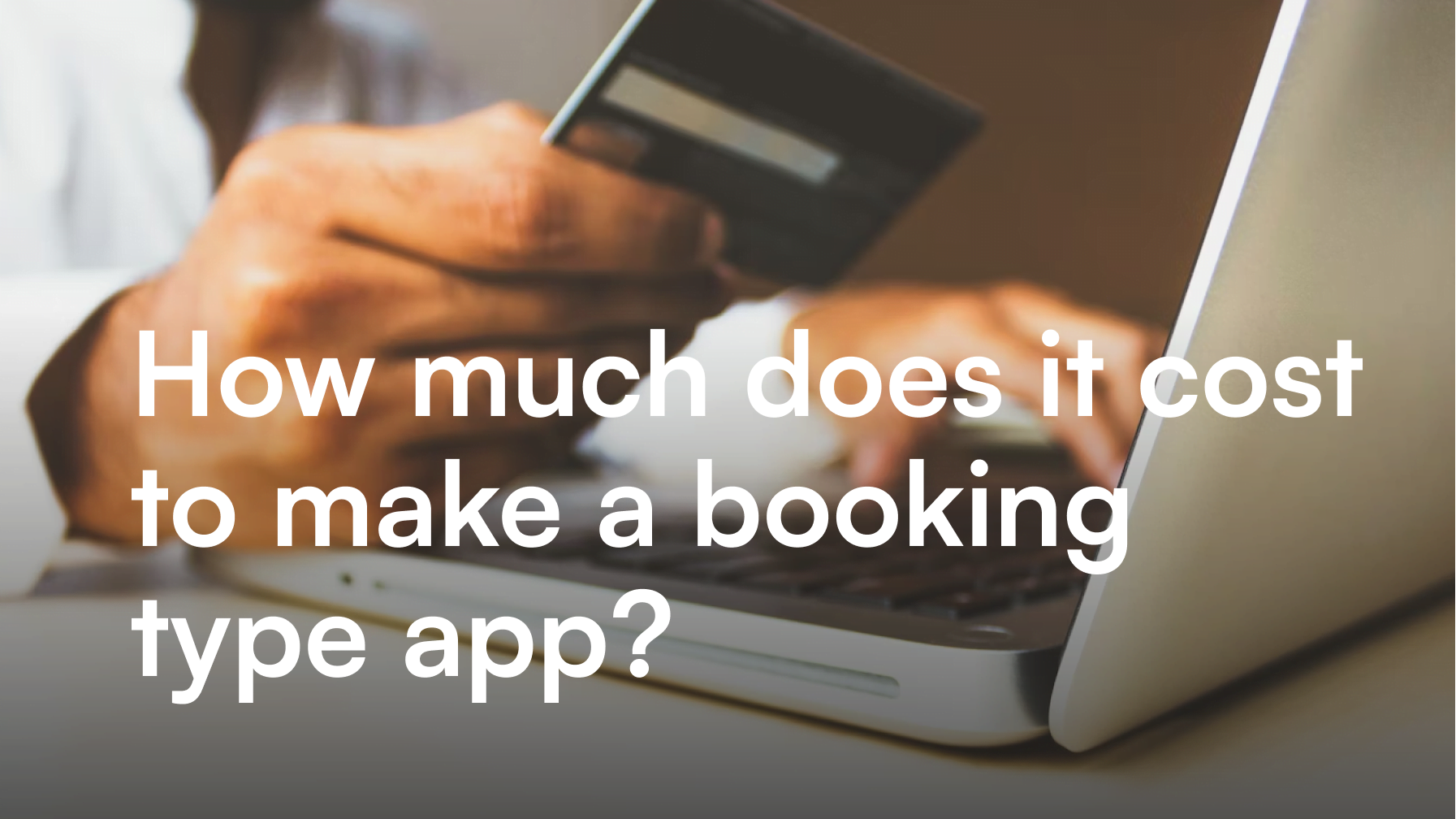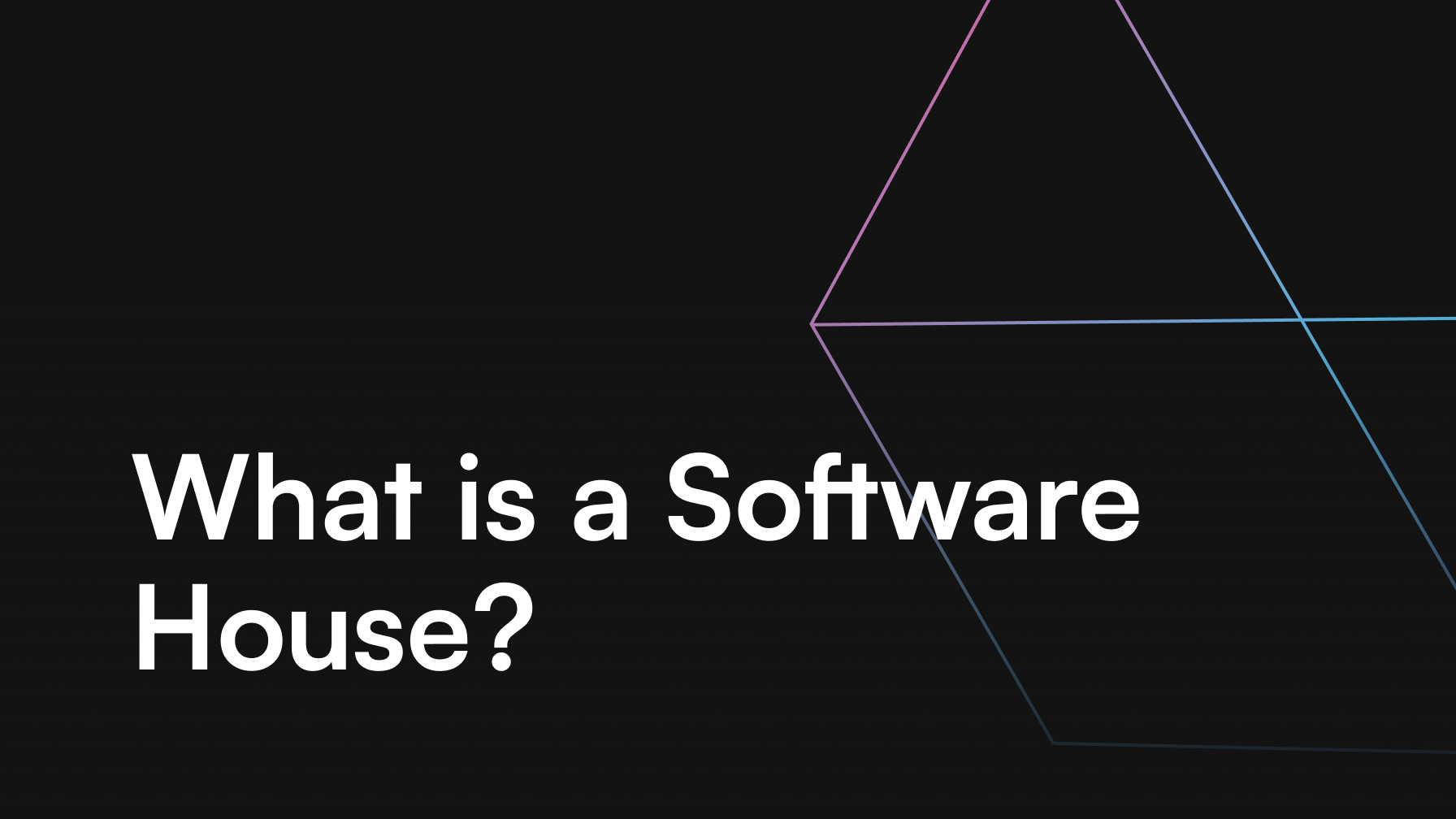How Much Does it Cost to Make An App in 2024?

Jakub Turkowski

Karol Wegner

Alexa Trachim

Paulina Chmielewska

Gareth Smith

There seems to be no slowdown in digitisation and app development as we enter 2024. According to data.ai, users in mobile-first markets like the United States and the UK spend nearly five hours a day on their mobile phones, with some forecasts suggesting more than 400 billion apps will be downloaded globally in 2024, with 120 billion in the US alone according to Statista. With numbers like that, it is no surprise that companies plan to spend $332 billion USD on mobile advertising this year to cash in on this highly lucrative market which is set to generate $565 billion USD in revenue by 2030. With app development being key to driving such results, the question which continues to arise is “What is the cost to build an app?” However, that seemingly simple question leads to so many more questions like, should I outsource app development or build it with an in-house team? Do I need a native app or a hybrid app? If I develop native apps what are the app maintenance costs? If my app development budget is too low, what should I do? What is the difference between the initial development cost and the actual final cost? So, let’s dive deeper into app development and answer the question, how much does it cost? How will app administration be handled?
The main factors that influence mobile app development cost
Back in 2020, the average app development cost in North America was over $300,000 USD ($150,000 for iOS and $160,000 for Android). With so many macroeconomic factors affecting the IT sector globally, those costs have increased by more than 20%. Whether to outsource app development is one of the most common ways to get the most out of your app budget. But the development cost of an app depends on many factors and the first question must be who is the target audience for your app? It affects the mobile app development process, as well as everything in between. Different target markets require different problems to be solved. This translates not only into different features and functionalities of the mobile apps but considerations beyond mobile platforms must be taken, like will app users take the time to download your mobile apps or will a hybrid app or PWA be better suited to users’ habits? This will go a long way to determining your total app budget.
Mobile app cost – B2C type of business
A B2C app is a type of mobile app designed for businesses to sell their products or services directly to individual consumers (B2C stands for “business-to-consumer”). These apps typically have features such as online shopping baskets, payment gateways, product catalogues, and customer reviews. Examples of B2C apps include e-commerce apps, food delivery apps, loyalty apps, and fitness apps and so many more. The goal of a B2C app is to provide a seamless and convenient experience for the end-user, while also helping businesses increase their sales and revenue. In most cases, you will find theses apps in the Google Play Store or Apple app store.
Alternatively, these stores are full of Android and iOS apps designed to entertain, develop relationships and provide easy-to-consume content. These include gaming apps, streaming apps, dating apps, messaging apps, and a multitude of social media platforms. Because the target audience is broad and trends change with time, you should consider not only app creation cost but development and maintenance cost as well.
B2C apps depend heavily on user satisfaction and the perception that it is a simple app and easy-to-use. This makes mobile app design one of the most critical steps in the app development process. Of course, there will always be a few dissatisfied users of your digital product but it doesn’t take long for bad user experience to gather momentum and your app development budget (which is sometimes people’s life savings) has been wasted. This is a good reason to consider working with one of the reputable app development companies who understand how investing in proper mobile app design can save you tens of thousands of dollars (or Euros) in the overall app development cost. A professional app development partner will show you ways of allocating your budget in the areas which will provide you the highest business value for your business.
One question which often comes to people’s minds is how to recoup your app development cost when most apps are free to download. While the app development price can be significant, the rewards for a proper monetisation strategy can be very lucrative indeed. Within apps there is space for advertising, push notifications, in-app purchases (users pay for them, really), or go beyond the simple app with basic features and move towards a subscription model for repeat users. So, even if the B2C apps are free to download in app stores, there is room for boosting your revenue here.
Mobile app cost – B2B type of business
A B2B mobile app is a type of mobile application designed for businesses to transact and collaborate with other businesses (B2B stands for “business-to-business”). These apps are typically used by companies to manage their operations, communicate with suppliers or customers, and streamline their business processes. Examples of B2B apps include supply chain management apps, inventory management apps, and project management apps. The goal of a B2B app is to improve efficiency and productivity by providing businesses with the tools they need to better manage their operations and relationships with other businesses.
The other common B2B application is the SaaS model which is a software solution that is hosted in the cloud and delivered to customers over the internet on a subscription basis. These applications are designed to help businesses streamline their operations and improve their efficiency. Since these are applications designed to serve the needs of businesses, they are typically sold and marketed to other businesses, rather than individual consumers making them primarily a type of B2B app. SaaS applications are often used for a variety of purposes, such as customer relationship management, project management, accounting, and human resources management, and many other problem-solving applications. They are especially popular among small and medium-sized businesses that do not have the resources to develop and maintain their own software solutions.
While SaaS applications can be sold to large enterprises, it is also common for an enterprise to develop an enterprise app itself with its own internal development team if the right solution can’t be purchased “off the shelf”. In some instances, if the internal development cost is too high or specific expertise is required to solve a specific business need, an enterprise might choose to outsource app development to a reputable app development company. So, if you go down the SaaS model road, once again, it is important that you understand your target market and solve a specified business-related problem (e.g. provide business analysis like Google Analytics does). Your target audience might be smaller but your market will be willing to spend significant money if your application provides value.
The app has to solve comparable problems for many companies or be tailored-to-needs of one company. B2B apps are not simply available in app stores. They are usually providing subscription-based services that are the answer to particular needs. How much does it cost to make an app for the business-to-business sector? There is no clear answer, as each project is unique – it requires a specified development team (it may happen that app development agency will need to hire freelance app developers), a project manager (we always have one dedicated for you) and a tailored project management process, designing a custom user interface, app testing, multi language support, and many more. So, you see, such an app requires custom app development which can be expensive. But trying to take short-cuts can sometimes cost you more in the long run. Let’s find out more…
Mobile app development cost – which operating system to choose?
One of the first things to consider when allocating your app development budget is what platform should your app be available on. Without putting too much thought into it, many people respond automatically by saying “all of them” but from a business analysis perspective, this is not a good app development strategy. There are pros and cons for choosing a web app, just the same as choosing a mobile app. And for that matter, there are pros and cons for hybrid app development too, and in each case, development costs will always be a consideration. There is no significant difference in mobile app development costs when it comes to Android and iOS if you choose to develop a native app for just one of these platforms. Still, there are differences in capabilities and functionalities. These might have an impact on the timeline and translate to a higher cost of mobile app development. Moreover, if you decide to develop an app separately for both platforms, the final cost may even double. In every case, you should ask one of the reputable app development companies to provide you an app development cost estimate with a recommended solution based on your business goals and priorities.
The mobile app development cost breakdown should show you the cost to build the app, whether it is native app development, hybrid app development or web app development, the team required, an estimated app development timeline, and enough information to allow you to understand what the final cost might look like if you choose to build an app. Sometimes it is good to ask for clarity on the assumptions because in many cases the original development cost estimate can vary a lot as the requirements are better understood. (If you need help to understand the total app budget required for your project, you can call us and get a free consultation). But if you have made it this far, it is time to get into the nitty-gritty of some technical aspects so you can find out how much the app development cost is in 2024.
Technological factors that influence mobile app development cost
The primary estimation base for a particular project is dictated by the type of business you want to target and by which technology you choose to utilize. The main difference is between native mobile apps and cross-platform mobile apps. A seasoned software development company should offer more than one option – but what is the actual difference, and why does it matter?
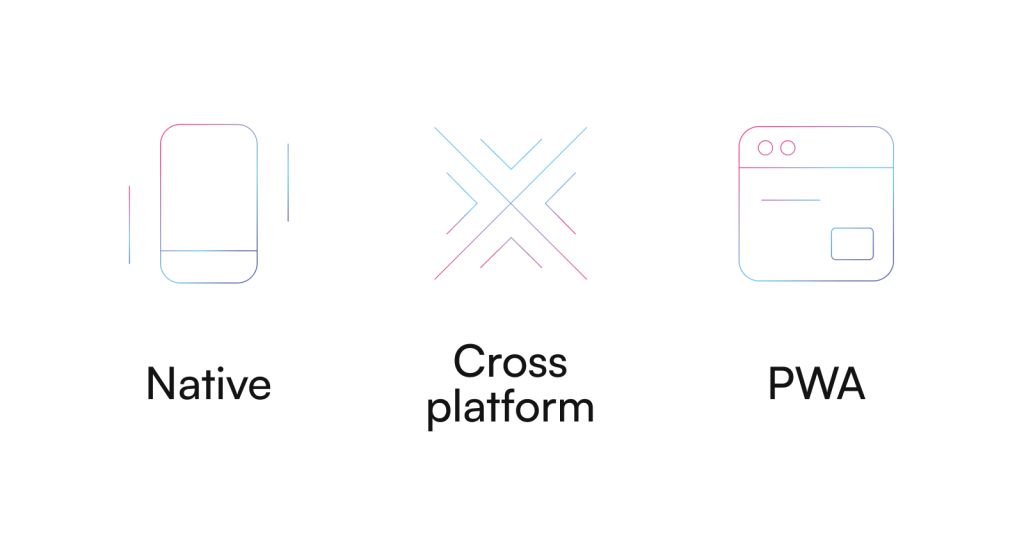
Native app development vs Cross-platform app development vs Progressive Web Apps
Your mobile application can reach the market using different technologies, each with advantages and disadvantages, but only some of them can compete with each other when it comes to quality. When evaluating how much it will cost to develop your app, the choice of technology is one of the most critical factors.
Native solutions for app development
At the moment, native apps dominate the market. In this case, we create an app dedicated to a particular mobile platform – iOS or Android (Apple and Google providers). Some time ago, developers switched from Objective-C and Java (popular back in the day) to mobile application development using Swift (iOS) and Kotlin (Android), and these technologies are now officially acknowledged as the main native languages for these platforms. Native apps allow app developers to create lower-level code, which gives better control over the whole environment, making these solutions more accessible and user-friendly.
Keep in mind that when you consider hiring mobile app development company, you need to know they have an outstanding and diverse development team (in terms of skills and knowledge). Apple has some strict regulations that have to be followed, and Android is more adaptable – each development platform uses different frameworks and SDKs (Software Development Kits). These have a significant influence on app development budget. So, choose only a professional app development agency, they have what it takes to make an app that has amazing quality and at a fair price.
Cross-platform solutions for mobile app development
Hybrid apps, known as cross-platform apps, are now super-popular. In 2018 Facebook’s React Native was the market leader, but Google’s Flutter outran it, now claimed as the leading technology for such apps. These technologies have been on the market for a while, becoming popular in recent years by refreshing the approach to mobile app development.
When we create an app using Flutter or any other cross-platform technology, the software is available on both iOS and Android immediately – as there is only one codebase. So, it takes less time for the development team to develop an app.
PWA (Progressive Web Apps) for app development
The third top-rated solution used for mobile app development is PWAs. Progressive Web Apps are not native because they don’t compile to a particular platform (iOS or Android). Creating an app like that is possible thanks to web technologies, and using them is comfortable with browsers installed on smartphones.
Type of app features you can develop
App development costs will vary depending on the number of functionalities and their complexity. Is your product a simple app with one main feature or a comprehensive software product with in-app purchases, ads and various options? Perhaps you want to add new features to an existing product? This will all influence the hourly rate and the time required in your app development project.
For example, app features like push notifications or GPS-based modules can be much easier to develop when using native technologies. That means a separate app for Google Play and App Store instead of one cross-platform product. The cost of building a mobile app like that will be slightly higher, but what’s the exact difference?
Which technology should I choose for my app development?
Choosing the right technology stack is critical for a successful mobile app project. As there is no one-size-fits-all technology or framework, the decision must be based on each project’s individual needs.
The main reasons for employing cross-platform frameworks like Flutter are the lower costs and faster app development speed. Thanks to a single codebase, design, development and app maintenance can be more manageable. However, don’t believe in marketing promises that choosing Flutter will lower development costs by 50% – this is a myth (you cannot skip any app development stage). After several years on the market, we can though say that this technology has matured and established its position on the market, so it’s a reliable choice in many cases, especially for simple products, changing project scopes and MVPs.
The high quality of native mobile development tech stacks will always make them relevant. iOS and Android technologies are fully evolved and refined continuously. Employing native technology stack for a project opens the way to practically limitless possibilities. For ambitious projects with high requirements, platform-dedicated SDKs are a choice that offers the best quality.
Price comparison – Native development vs. Cross-platform development
Native development

Flutter development
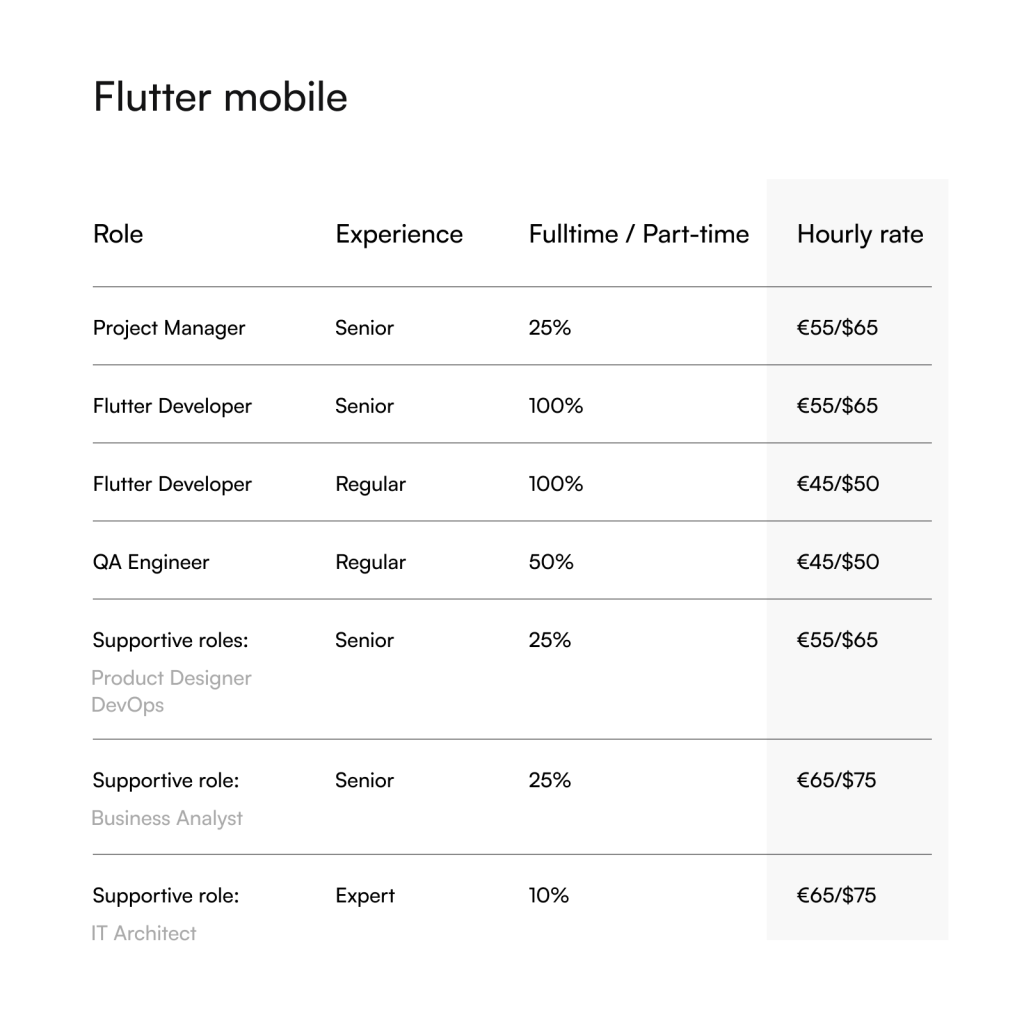
Price comparison
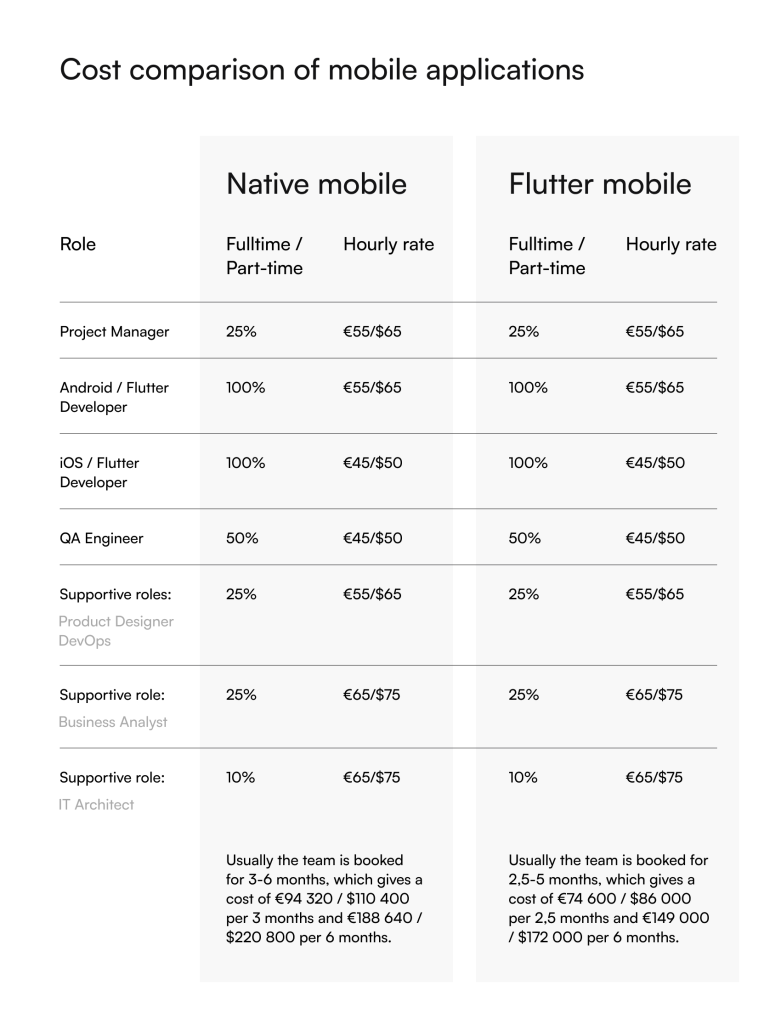
How each role in a mobile app project influences the cost of it
No matter if your target audience is B2C, B2B or any other group, the greater the problem you are trying to solve, the greater the app complexity usually gets, in most cases requiring a team specialising in web and mobile app development services. While a freelancer might be able to provide simple app development services, we have always held onto the belief that developing software is a team sport. If your app depends on many integrations or large amounts of data, you need an experienced back-end developer who can take responsibility of developing and maintaining the server-side of the application and the parts of the system that users don’t see but are necessary to run the application – an expert in Java, Python, PHP or Node.js. But, when we talk about the parts of the system that the user sees and interacts with directly, you really want someone who is an expert frontend developer to make sure the look and the feel of the app is the focus. Android apps need Kotlin developers, iOS apps need Swift developers, hybrid app development is being done efficiently these days with Flutter, and a web app might call for a Vue.js expert.
The development team composition is a vital factor that can affect the app development cost. Each person in the squad is responsible for different tasks, all working towards one goal – to deliver a perfect mobile app that will meet your expectations and make your customers fall in love with it. So what are the roles in the app development process? How many people are required to create app data, perform app testing, provide app maintenance, and conduct project management? And is this all that’s needed to make an app? The development team is just one part of the story, there are other roles that are crucial in the process of app development.
UX/UI Workshops and app design
While people tend to focus on technology, one of the most vital things when building an app is its appearance. About 12 years ago, we were just scratching the surface of this massive industry, and the only thing people were interested in was if the mobile app features worked properly and it didn’t crash too often. While the features are still very relevant, user experience is driving the success of mobile apps today. It is important to ensure you application fits a specific audience and their behaviour and expectations. This has pushed UX design to the forefront of the industry, especially for mobile application development. Consequently, we believe in the growth of the UX/UI design process, increased demand, and the growing quality of such services.
That’s why, at itCraft, we begin most of our projects with UX design workshops. Working with the client helps us identify business needs, analyze the competition, define the mobile app’s functionalities and MVP (Minimum Viable Product), and create an app with a future growth plan. We need to understand the purpose of the application we will develop, and workshops are the perfect opportunity for the initial validation of the whole product and all its elements.
The investment into a proper product design workshop can cost little but create the product assumptions for a digital product the market will accept and fall in love with. It also serves as a foundation for determining the scope of the app and desired functions, creating the development plan and designing its UX and UI. The initial workshop usually takes two or three days of live or online sessions and then continues offline. Here, we conduct business analysis and use market research to define a product with a viable value proposition and business model. We also delve into user flows and create a UX concept which also help in creating user story documentation. Then considering all the business and user requirements, we turn our attention to the technology and consider any ‘dependencies’ (e.g., third-party APIs) and prepare the initial system architecture. The whole process takes 5 to 10 days depending on the size of the project.
Each step also allows us to understand the app complexity and come to a final cost estimate allowing you to understand the financial commitment and answer that burning question, “how much does it cost?” After the workshop, the client will have complete technical documentation that is necessary to build an app. Our dedicated service page provides more information about UX Design Workshops (including the scope, all the steps, goals, and outcomes). This step will give you a better overview like you were using interactive app development cost calculators.
Project manager – a crucial role for smooth cooperation
You might wonder how a project manager can influence app development costs. The answer is: significantly. A seasoned software development company always provides a dedicated project management specialist for every client, especially in Agile Scrum methodology.
A project manager is an integral part of an app development team, whose responsibilities include task organization, communication with the product owner and reacting to unpredicted issues. With an experienced Project Manager in control, you can rest easy and hand over constant control over the app development process. Importantly, you also save the budget – because your development team knows what to do and is guided by an experienced co-worker.
Moreover, the project manager is always there for you, when you need to ask questions – not only in terms of development cost, but also regarding app maintenance costs, the current status of work, and anything else you would like to know about the mobile application development process. Project management is a vital part of app development, so do not save money in this area.
Is quality assurance essential to develop a mobile app?
Absolutely, and you should always include tests in your project plan. It’s a crucial part of the development process, and when it comes to cost breakdown – always worth the investment. You might pay more for proper quality assurance, but in the end, you will save money. Preventing bugs and finding defects early means spending much less on app maintenance after release. It always pays off to prevent than to cure – and it applies to reducing the development cost as well.
Developing an app with plenty of new features is a complicated process with many steps on the way, which is why we always test our software from the very beginning – following best practices and methods.
Read Also
What is the role of quality assurance in software development?
Why test if it should be working? Mobile Quality Assurance – a tester’s perspective
Consultations – when you need additional support
Developing a mobile app requires tackling unpredictable obstacles and problems. Consultations are a perfect way to conquer them. You can undertake them with your provider (if they offer this service) or a third-party company. With business analysis, idea verification and strategy adjustments, you can optimize app development cost and make decisions based on data and experience, not assumptions.
At itCraft, we offer business analysis and other types of consultations to every interested party, no matter if you already have a software product, or you want to build one with us.
What is the cost of hiring a development team?
That’s another complex topic we have described in a dedicated article. If you would like to build an app using a workforce from another region of the world (e.g., Eastern Europe), the cost per hour differs depending on the country and several other variables. Outsourcing and staff augmentation has become the standard practices for mobile app development and is often used to optimize the cost breakdown. App developers from Poland are talented, skilled, and hard-working. At the same time, the currency differential allows you to engage a high-quality mobile app development team at a lower cost than you might expect. If you want to build an app in 2024 – consider staff augmentation or outsourcing managed teams.
We invite you to explore our article about outsourcing, which explains how mobile app development cost diverges in particular locations. It describes how the various regions approach the industry, the app development cost, where you can find the best mobile app development team and which collaboration models you should consider. Find more in this article: Custom software development outsourcing – what is it all about?
Application development – how much does it cost to make an app in 2024?
If you asked the question, “How much does it cost to make an app in 2023?” just like most things, app development costs globally were slightly cheaper than they are in 2024 which makes your choice on how to spend your budget even more important. If you have already done some research on this subject, you have probably come to the conclusion that the answer to “What will development cost me?” is “It depends.” Unfortunately, this is true – there is no universal cost to develop an app. While we can’t give you a perfect template to estimate app cost, you can contact us and ask for it and we will provide you with an estimate of the cost to turn your idea into reality.
We enjoy a challenge and are transparent in our processes, so we would like to outline the potential app development cost and tell you what can influence it. First of all, we encourage you to check out our pricing page, where we describe in detail how we account for particular projects and what is included in app development costs. We also provide examples of various digital products with different team sizes to show you how the price can be adjusted for each. In the following paragraphs, we will analyze existing solutions to show you how much the app would cost to be built and the various factors that can impact their cost.
App development cost estimations based on popular mobile solutions
Below we present a sample of estimates for the most popular projects. We’ve made many similar applications, so the budget simulations in this article are based on our project experience.
In each of these examples, we’ve adopted such assumptions:
- Each project is done from scratch, starting with the workshops stage and UX/UI design.
- Source code is also developed from scratch, based only on popular open-source libraries.
- The team works using Agile Scrum methodology, with the product owner on the ordering party’s side.
- The size and engagement of the team are optimized to allocate relevant members in time (outsourcing).
- The estimation affects the whole app development process – project management, the implementation of all the components determined in the project summary, including the time needed for Quality Assurance, deployment and efforts to maintain an app.

How much does it cost to make a taxi app?
Uber-type apps used to order a taxi or transportation have gained extensive recognition in the last decade – primarily driven by Uber’s success. Many apps on the market offer similar services – including taxi corporations that started to develop an app for themselves to compete with market leaders like Uber, Lyft, Didi, or Grab.
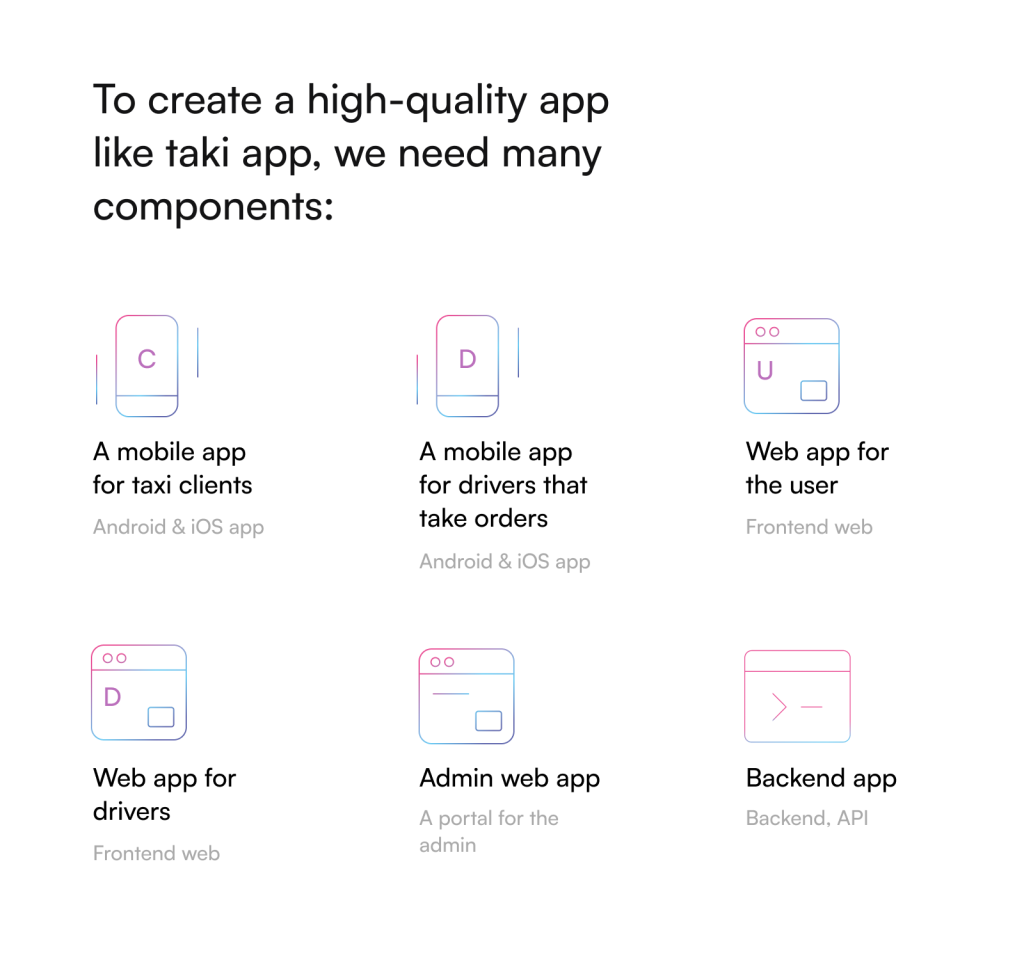
The cost to develop a high-quality, complex app like that can be significant due to such features as:
- A mobile app for taxi clients (Android & iOS app),
- A mobile app for drivers that take orders (Android & iOS app),
- Web app for the user – a portal where the user can access their profile, settings, billings, etc. (frontend web),
- Web app for drivers – a portal where the drivers can access accounting reports, their profile and settings, etc. (frontend web),
- Admin web app – a system for the admin to control the whole system
- Backend app to manage to receive and divide the orders (backend, API).
We describe this type of architecture in an article:
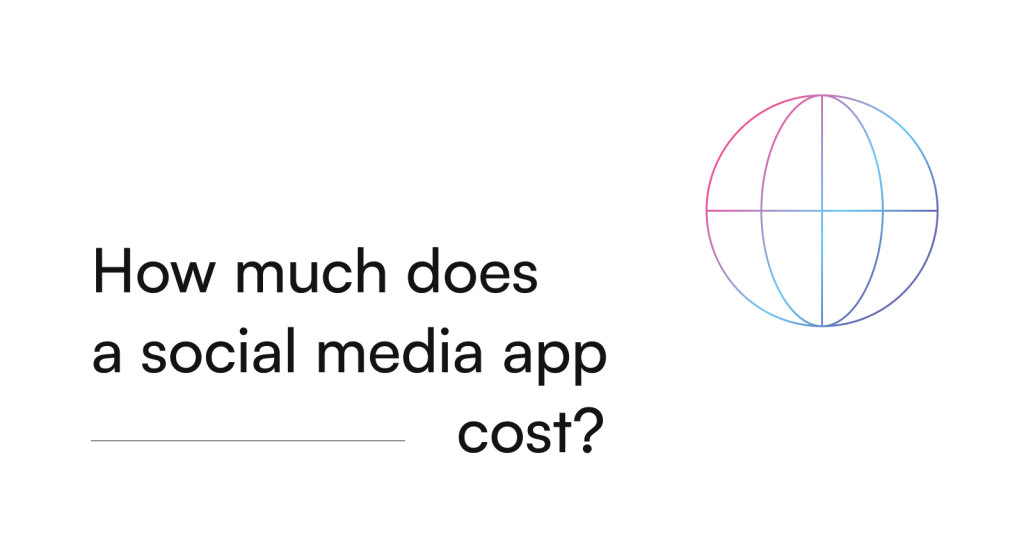
How much does it cost to make an app with social media features?
When it comes to social media apps like Facebook, Twitter, Instagram, Pinterest, or LinkedIn, the amount and types of functionalities are crucial. Some social media platforms’ mechanisms are based on machine learning – for example, face recognition, push notifications, content sharing, people you may know recommendations, displaying individual feeds prepared by the algorithm, and so much more.
Social media apps need to offer appropriate scalability, as they are often used by thousands (or even millions) of users. Storing content and personal data should be secure but also maintain high-quality performance rates.
TikTok is an excellent example of a social media app that gained extreme popularity among young people worldwide in the last two years. Another engaging platform is Clubhouse, which was the subject of an uproar at the beginning of 2021. Check out our article about it: How much does it cost to make an app like Clubhouse?
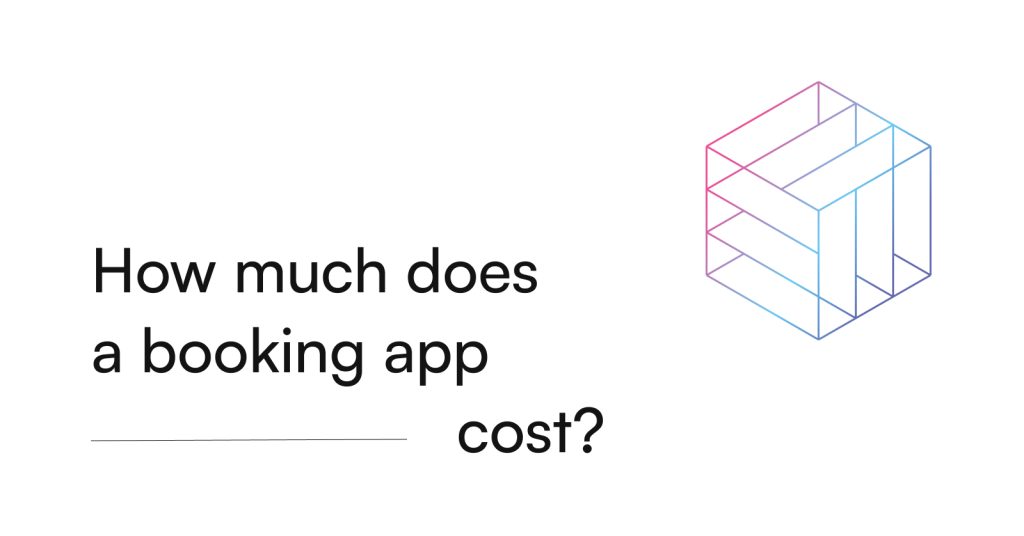
How much does it cost to develop an app for booking services?
How to make an app for booking services and appointments? There are many answers, as they are present in almost every industry nowadays, but some primary beneficiaries are:
- Tourist industry (hotels, apartments, plane and train tickets)
- Beauty industry (hairdresser and beautician appointments)
- Transportation industry (mentioned Uber and similar apps)
- Food industry (ordering food, reservations at restaurants)
- Entertainment industry (cinema, theater and concert tickets)
Importantly, when it comes to this type of mobile app development, there isn’t one dominant trend – some develop mobile apps, others prefer web solutions, and there are also companies that invest in both. However, user behaviour experts suggest that a mobile app using push notifications is a key driver for app engagement.
The beauty industry is unique because booking systems already existed before here – usually via phone calls. When we make an app like that, we have to provide a point of difference; in this case, the main goal is to give the user the ability to book their appointments by themselves, from any place and at any time, quickly and easily.
Booking apps are highly valuable, offering many benefits to both the user and the vendor. App development cost estimation with a detailed list of app types and factors that influence the price is available in our article: How much does it cost to make a booking type app?

How much does it cost to make an audio or video streaming app?
The development of network infrastructure, bandwidth and mobile internet connection improvement (3G, 4G, 5G) allowed the dynamic growth of mobile apps designed to play multimedia content and stream it straight from our phones (do you remember using apps offline mode? Not games of course).
In 2015 the first significant apps for video live streaming started to appear – such as Periscope (bought by Twitter) and Meerkat (closed in 2016). These apps rapidly became popular – primarily due to the overall growth of social media apps. The users were attracted by the possibilities of a more accessible and reliable mobile network and the capabilities of mobile apps to live stream videos. Just after this boom, the most prominent players in social media markets started to implement their own solutions or continued to expand the existing ones. And yes, they had a giant app development budget, thanks to their popularity.
YouTube was already testing the live streaming feature in 2009 and 2010, but it was too early due to network infrastructure limitations. Ongoing user demand for this service prompted YouTube to introduce the live streaming functionality to their main mobile app in 2017. Facebook went through a similar path – testing Facebook Live in 2016 before sharing it with their users at the beginning of 2017.
Today, more and more users would like to publish their live streams – channels with millions of subscribers are becoming more and more common, with millions of viewers watching some of these videos at the same time. We also get different business models; for example, Clubhouse, an audio streaming platform, often compared to “live podcasts”.
The cost of crucial app features is the main factor that influences the final price (and lets you prepare a proper app development budget) . These apps need payment systems, geolocation, cross-user streams, push notifications and much more. We are writing a blog article that will analyze the subject of live-streaming apps in detail. How much does it cost to make an app like that? We recommend following our website to be always up-to-date.
In conclusion – how much does it cost to make an app in 2024?
As an experienced and proven app development company, we know that the mobile and web app cost is influenced by many factors – from industry, through number and type of features to the technology of choice. Of course, we try to estimate some examples of apps based on our previous projects, and we share our conclusions here on our blog. It is worth remembering that each project is different because of individual requirements and needs – and we always take this into account when estimating and executing a project.
The best way to establish your app development budget for creating an app is to reach out to a development agency and discuss your project. We encourage you to contact us – we would love to discuss your business needs and how we might help achieve them. We will propose the best solution suitable for the type of app you want and your potential user’s desires. Let’s make an app in 2024 together!
Let us know your app idea and how we can help you
Read more
Why is machine learning a growing trend?
What is a cloud application?
How much does it cost to make a booking type app?
19 Apps built with Flutter Framework
How mobile applications are fueling digital transformation
What is a mobile app?
